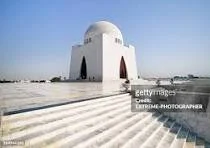Exploring the Diverse Cities of Pakistan
Pakistan, a country of rich cultural heritage and stunning landscapes, is home to numerous cities, each offering a unique blend of history, culture, and modernity. From bustling metropolises to serene historical towns, Pakistan's cities provide a fascinating glimpse into the country's diverse tapestry. Here's a look at some of the most notable cities in Pakistan.
Islamabad: The Modern Capital
Islamabad, the capital city of Pakistan, is renowned for its high standard of living, safety, and abundant greenery. Nestled against the backdrop of the Margalla Hills, the city is meticulously planned and boasts a blend of modern architecture and natural beauty. Key attractions include the majestic Faisal Mosque, Daman-e-Koh viewpoint, and the serene Rawal Lake. Islamabad also serves as the political hub, housing key government buildings and foreign embassies.
Karachi: The Economic Powerhouse
Karachi, the largest city and the economic heart of Pakistan, is a bustling metropolis located on the Arabian Sea coast. Known for its vibrant culture, diverse population, and dynamic economy, Karachi is the country's main industrial and financial center. The city offers a rich tapestry of attractions, from the historical Quaid-e-Azam's Mausoleum to the lively Clifton Beach. Karachi's culinary scene is also renowned, offering a wide array of local and international cuisines.
Lahore: The Cultural Capital
Lahore, often referred to as the cultural capital of Pakistan, is steeped in history and tradition. Located in the Punjab province, Lahore is known for its rich architectural heritage, including the grand Badshahi Mosque, Lahore Fort, and the elegant Shalimar Gardens. The city's vibrant arts scene, bustling markets, and delectable food make it a must-visit destination. Lahore is also famous for its educational institutions and as a hub of literary and artistic activities.
Peshawar: The Historical Gateway
Quetta: The Fruit Garden
Quetta, the capital of Balochistan province, is often called the "Fruit Garden of Pakistan" due to its numerous fruit orchards and favorable climate for growing a variety of fruits. The city is surrounded by imposing mountains and offers a cool, pleasant climate. Key attractions include the Hanna Lake, Quetta Archaeological Museum, and the bustling bazaars that offer a glimpse into the local culture and handicrafts.
Multan: The City of Saints
Multan, located in the Punjab province, is known as the "City of Saints" due to its numerous Sufi shrines and mausoleums. The city's history dates back to ancient times, making it one of the oldest continuously inhabited cities in the world. The Shrine of Bahauddin Zakariya, the Shrine of Shah Rukn-e-Alam, and the beautifully tiled Multan Fort are major landmarks. Multan is also famous for its mangoes, pottery, and intricate blue pottery.
Faisalabad: The Industrial Hub
Faisalabad, located in the heart of Punjab, is the industrial center of Pakistan. Known for its textile industry, the city contributes significantly to Pakistan's economy. Faisalabad's clock tower, surrounded by eight bazaars, is a central landmark symbolizing the city's vibrant trade and commerce. The city also offers educational and research institutions, making it a key contributor to the country's development.
Gwadar: The Emerging Port City
Gwadar, located in Balochistan province, is an emerging port city with strategic importance due to its deep-sea port. The city is poised to become a major hub for trade and commerce under the China-Pakistan Economic Corridor (CPEC). Gwadar's pristine beaches, such as the Hammerhead and Astola Island, are attracting tourism and investment, promising a bright future for this coastal gem.
The cities of Pakistan, with their unique blend of history, culture, and modernity, offer a rich and diverse experience. From the serene landscapes of Islamabad to the bustling streets of Karachi and the historical richness of Lahore and Peshawar, each city has its own story to tell. As Pakistan continues to develop, these cities play a crucial role in shaping the country's cultural and economic landscape.










